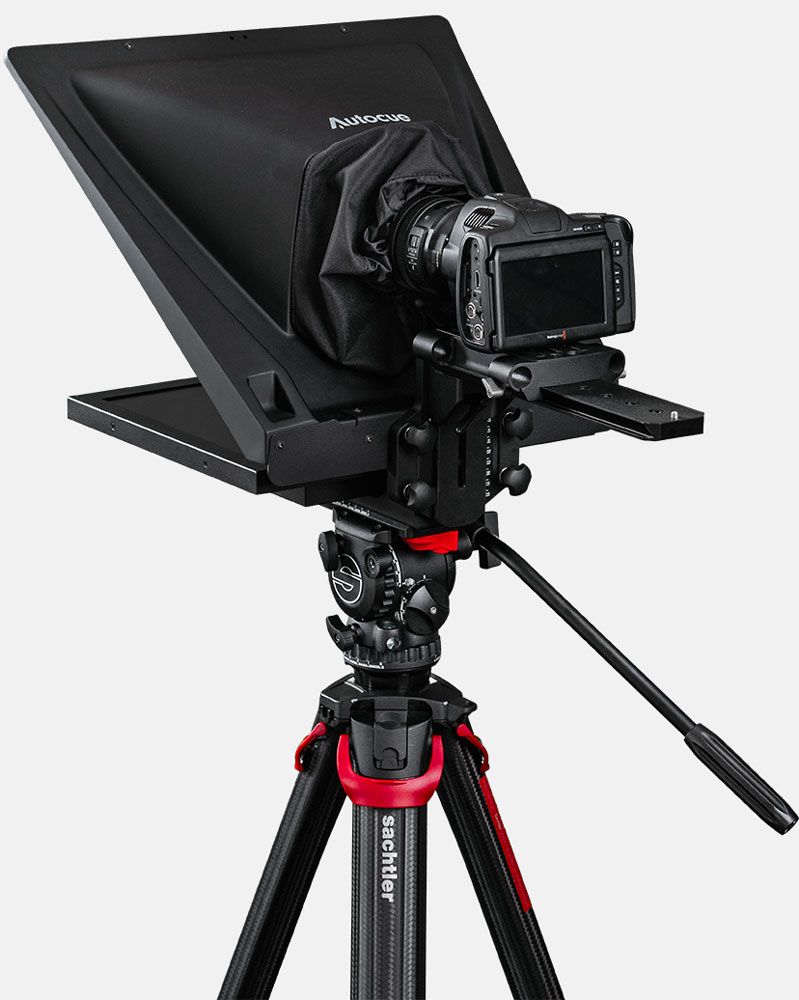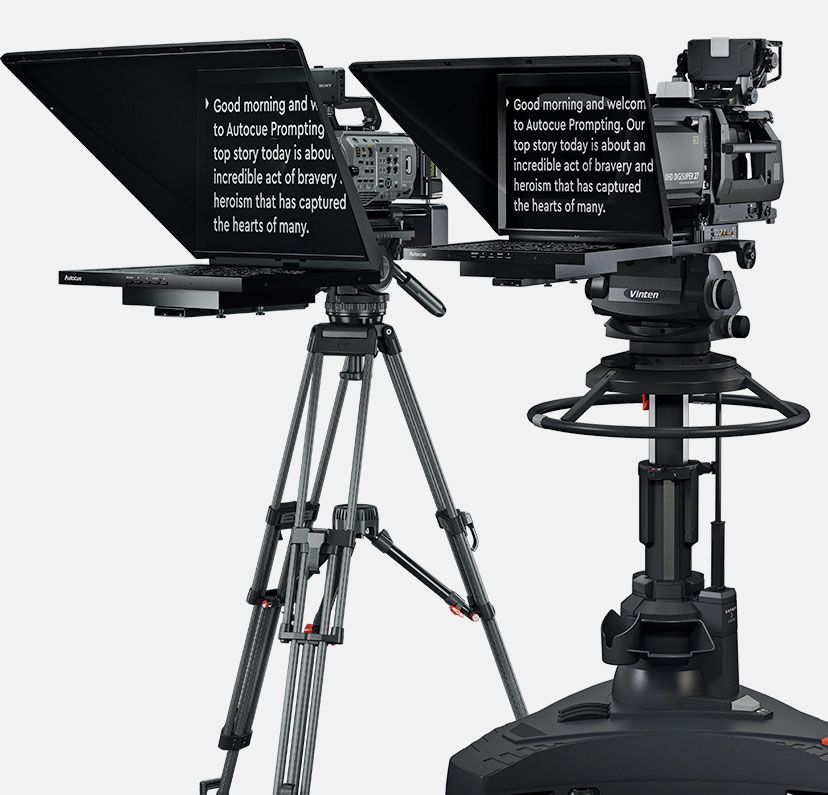Autocue
Autocue has been the leading provider of teleprompters to the broadcast industry since their introduction in the 1950s.
Since 1955 we’ve been making prompters for use in studios, on podiums, and well, pretty much anywhere. We believe teleprompters make for happier talent and more connected audiences. That’s why we’re passionate about improving every production – big and small – with prompting.
Every Autocue product is designed with a focus on what we call our ‘3S principles’
Speed
To push production efficiencies, it’s important to champion quick setup. We place everything ready to hand for streamlined productions.
Simplicity
We seek the straightforward, toss out the tools that don’t work, and value instinctive understanding over having to learn new techniques.
Sustainability
We work hard to conserve energy and cut carbon, package with care, and design your Autocue products with longevity in mind.

Featured Products

Explorer Series
New to this or a prompting part-timer?
We recommend a recce of our Explorer Series: complete prompting packages.
The Explorer Series is built for speed. Theres no point reducing production time with prompting if your setup time increases instead. Explorer Series Teleprompters are designed with minimal parts that slot together and quickly adjust.

Pioneer Series
Demanding live editor, SDI cable puller or just serious about brightness?
You’ll find all the features you need in the Autocue Pioneer Series: broadcast standard prompting monitors and live editing software.
Feature-rich and customisable prompting solutions are the basis of the Pioneer Series. High quality products and accessories mean you can choose the elements that make the difference to your production.

Navigator Series
Prompting from the podium rather than the studio?
Public speakers can lead from the front with our Navigator Conference Packages: executive prompter systems for venues large and small.
Prompters for public speakers are a different breed to their ‘through-the-lens’ cousins for TV, even though they share many similarities. Generally found in pairs, they allow speakers to look from side-to-side, maintaining natural eye-contact with their audience from the podium.
